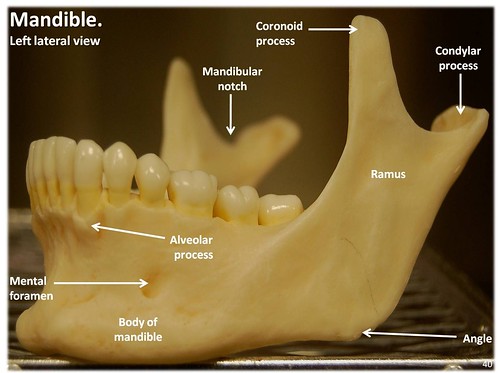If you’ve seen a 3D printer in action your thoughts were probably much the same as mine. “Yipee! I’ll never have to buy a Kinder Surprise for the toy again!” However aside from people with an insane addiction to tiny plastic figurines (and really, who are we to judge?) the technology behind 3D printers has been put to some pretty incredible uses. Uses such as:
4 Astounding 3D Print Jobs
Growing An Old Lady A New Jaw

Thanks to 3D printer technology, an 83 year-old woman from Belgium has been given a brand new jaw bone. Admittedly, this takes technology a bit more complex than your standard CC licensed Reprap. The jaw was made from a fine titanium powder, sculpted by a precision laser beam. The titanium scaffold was then left to marinade in some stem cells to create compatible tissue for the patient.
The end result is miraculous. The patient is reportedly able to chew, speak and breathe normally following the implant of the new jaw bone. It’s the first time something like this has been achieved according to Jules Poukens, the researcher at the biomedical research department of the University of Hasselt responsible for leading the operation.
Building A (Fake) Plane’s Engine

Yes, this is a bit of a cheat; you can’t actually make a working engine with a 3D printer. But Nino Caldarola of ImaginIt Technologies have managed to print 200 of the 1,400 parts needed to make such an engine which is at least capable of turning. Printed by the industrial-scale printing company, Fortus, the engine is made of fused ABS plastic, commonly used in plastic musical instruments and piping.
Sadly a working engine would need metal components, which we can’t print yet, but the sheer size and accuracy involved still make the end result look impressive.
Also Check : 6 ways 3D Printing Could Change Day-to-Day Living
A New House

Again, this requires something a bit more complex than a desktop Thing-O-Matic (Yes that’s an actual name for a printer). Enrico Dini invented the D-Shape “robotic building system” through his company Monolite UK.
The D-Shape uses the same process as most 3D printers- a nozzle moving along a path designated by a CAD file, dripping a liquid mixture of adhesive, sand and a solid catalyst. The material solidifies as its squeezed out, with the end result being more durable than concrete. Dini claims the material is actually indistinguishable from marble once it’s solidified.
The D-Shape can print a two story building with arches, staircases, columns, you name it.
Rocket Fuel
Yes, printing is now literally rocket science. The problem goes like this. For almost as long as there have been rockets scientists have been torn between the two types of rocket fuel. Solid rocket fuel, of the kind used in the space shuttle launch vehicle, which is stable, but once you’ve ignited it you can’t switch it off. It’ll just keep going until you’re in orbit. On the other hand there is liquid fuel, which is useful for short bursts and actually navigating once you’re in space, but which is less stable.
Some spacecraft, such as those on board Virgin’s SpaceShip One, use hybrid engines, but because it’s tricky to get liquid and solid fuel to combine and burn consistently these engines are rare.
However a patent was recently issued by the U.S. Patent and Trademark Office to inventors who have found a novel solution to the problem. Using stereolithography (that’s 3D printing to you and me) a liquid oxidizer could be made to flow through channels of solid rocket fuel. Putting it bluntly, the technique would involve literally “printing” tubes of rocket fuel.
The inventors are arguing that their creation will allow for controlled and consistent burning, will allow rockets to carry half the liquid fuel they would normally need and allow thrust to controlled just like on a liquid-fueled rocket.
Not bad for a printer.
